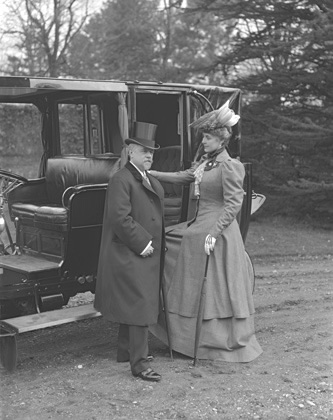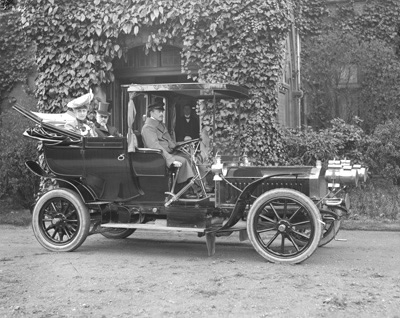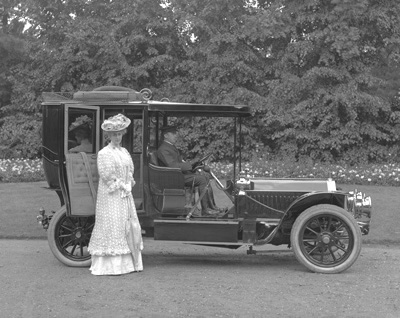|
Negative No: Laf5131 Dated: 23-0-1904 |
Dressed elegantly in a superb white morning gown, Lady de Grey, photographed in July 1904, stands by one of the couple’s early Napier vehicles, looking as if she is about to be driven to one of her numerous engagement in London. Already, by May 1902, The Car Illustrated reported on her attitude to automobiles that she “was one of the first among great ladies to welcome the innovation, [and who] drove up every evening last summer during the opera season to Covent Garden.”
Her association with the Covent Garden opera house has set her contribution firmly within the history of opera in Britain as she played a large part in the rejuvenation of the operatic scene in London and counted among her friends the Australian diva Dame Nellie Melba, the Russian impresario Sergey Pavlovich Diaghilev and ballet dancer Vaslav Nijinsky, as well as the Polish opera-singing de Reszke brothers. As one of the few women who “dazzled every London drawing-room” with her wit, good looks and energy, Lady de Grey was the embodiment of the perfect Edwardian enchantress.
 |
Negative No: Laf4712 Undated |
The couple were both fond of the new technologies. She had a telephone installed in her residence, and he sold off his horses in order to purchase automobiles. Apart from being a person of great wealth, Lord de Grey was the best shot in England and had held the honorary position of treasurer in the household of Queen Alexandra.
When in April 1905 they bought the 40 hp six-cylinder Napier landaulette with a body made by the renowned Muhlbacher firm of Paris (seen in the two Lafayette photographs where Lord and Lady de Grey appear together), they became the owners of the most luxurious car of the time!
 |
Negative No: Laf4715a Undated |
In 1904, persuaded by Edge, Montague Napier built the world’s first successful six-cylinder model, which was soon sold in a variety of motor capacities. The Napier ‘Six’ cars had pressed steel chassis frames and were fitted with the side-valve engines. They were among the fastest, quietest and most sought after automobiles on the market.

